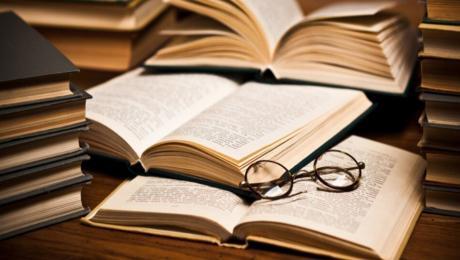Immigrant Writers Aspiring Immigrant Writers Should Read
Immigrant writers have a rich reservoir of inspiration that connects their personal lives and heritage. Readers travel to other countries vicariously through the descriptions in the books they read. The presentation of a lived experience enriches readers. The variety of immigrant writers in America has widened their readers’ exposure to other cultures.
Immigrant Authors Open Readers’ Minds about Immigrants
Reading makes readers more empathetic when they become absorbed in characters and experience their feelings. America is transitioning into a new era, the minority-majority era, which demands more empathy towards others so that all Americans work together for the betterment of their communities, states, and country.
The Diversity of Immigrant Writers in America
Chinua Achebe, an immigrant from Nigeria, wrote “Things Fall Apart,” describing the struggles of Nigeria’s Igbo tribe as their way of life was changed by white Christian colonists. Ghanaian-American Yaa Gyasi’s “Homegoing” presents the slave trade and its legacy through the story of two sisters and their descendants over a period of 300 years. Aspiring writers can see how the author skillfully manages to write a story of epic scope that is not compromised by excluding significant detail.
Jhumpa Lahiri’s fiction explores themes of immigrant life in America, duty, family, and freedom. Her debut short story collection, “Interpreter of Maladies,” was awarded the Pulitzer Prize; and her story about the children of immigrant parents, “The Namesake,” was made into a movie. Piyali Bhattacharya’s book of stories by South Asian American women, “Good Girls Marry Doctors: South Asian American Daughters on Obedience and Rebellion,” presents their work in an easily digestible essay collection.
Art Spiegelman’s serial comic, “Maus,” about life in Nazi Germany and the relationship between a Holocaust-survivor father and his son, brought serious respect to the graphic novel medium. The graphic novel, “The Best We Could Do,” by Thi Bui is about how displacement and immigration affected a Vietnamese-American immigrant daughter and her parents. Shaun Tan’s graphic novel, “The Arrival,” captures the immigrant experience from arrival to integration to growth.
Gene Luen Yang’s “American Born Chinese” is a graphic novel about a young student and the issues of identity that confront him in school. Christina García’s “Dreaming in Cuban,” and other works present the Cuban-American experience. Janine Joseph, an immigrant from the Philippines, writes stories and poetry about growing up undocumented in America.
The poetry of Vietnamese-American poet Ocean Vuong is spellbinding and deep. Nigerian-British novelist Helen Oyeyemi often uses fairy tales and fables in her novels.
Immigrant writers can be an important part of building a more empathetic and diverse society. If you are an aspiring immigrant writer, you will benefit by checking out the stories of other immigrant writers for inspiration and guidance.
- Published in Writing & Editing Resources
Book Writing Software and Publication Issues
Are you ready to write a book? Do you think getting your book published will be the most difficult challenge? Actually, the hardest part is writing a book, as there are more opportunities than ever before to publish a book. There are also more tools available to make the writing task easier.
Before you begin writing, you need to have your writing tools ready for use. Which one will work for you? The optimal writing tools provide the support a writer needs to become productive.
Software Tools for Writers
Will you use Word, Pages, Nisus Writer Pro, Scrivener, or something else? Scrivener is made for writers and is ideal for long projects. It can also output books directly to self-publishing services. Storyist offers an alternative to Scrivener. Its iOS version enables writing on the go. Storyist also has tools that help writers who intend to self-publish their work.
If you want to use a free tool, consider the open source Bibisco tool for Windows and Linux users. Its capabilities include character development tools and book and scene organization tools. InDesign and Photoshop are useful for creating the visual aspects of the book.
Mobile apps permit writing on the go. Word for iPad, Storyist for iOS, Pages and Quip for iOS, and Google Docs for iOS and Android are all available. OneNote, Evernote, and Pocket are all helpful for research. Trello, a project management tool, helps writers track their work and become more consistent. Go ahead and see what else you can use. Novel Factory, creative writing and other software offer writers many choices.
Self-publishing Sites for Writers
If you plan to self-publish, you have several options. CreateSpace, Author House, and Xlibris are cost-free or come with charges for more supportive services. EBook distribution choices vary with Smashwords, Draft2Digital, PigeonLab, EpubDirect, BookBaby, and eBookPartnership.
Book Proposals for Nonfiction Books
If you want a publisher to publish your nonfiction book, you will need to create a book proposal to pitch your book idea. A book proposal explains why your book, or book idea, is a marketable product. It can be 50 pages or more. Seasoned writers create the proposal before drafting the book. But, new writers may find it easier to write the book before creating the proposal. Do what works best for you.
A Novel Synopsis for Publishers
Agents or publishers want to see what happens in the novel. The synopsis contains the narrative arc of the novel from beginning to end. A novel synopsis is useful because it reveals weaknesses in the plot, characterizations, and/or the structure of the novel. The synopsis also reveals how unique or interesting the story is.
Writing is a process that begins with the basics, before the writer’s creative skills are exercised. Being organized, knowing how you want to publish the book, and preparing what is needed will make the process productive for you.
- Published in Writing & Editing Resources


